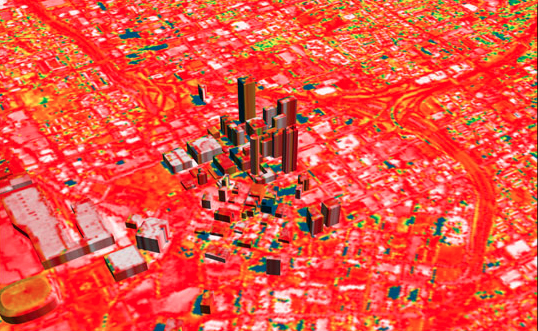Of all the impacts of global climate change, it’s extreme heat that kills more Americans each year than any other weather-related event.
The Centers for Disease Control and Prevention reports that as many as 600 people die from extreme heat in the U.S. every year. The urban heat island effect makes cities significantly warmer than their surrounding suburbs, exurbs, and rural areas, making them potentially deadly for those who lack air conditioning.
A 2016 Columbia University study projected that by 2080 up to 3,300 New Yorkers could die annually from intense heat exacerbated by climate change. The city launched a $106-million “Cool Neighborhoods” plan last year to mitigate the risks of extreme heat.
The plan includes painting surfaces white, planting more trees, creating green roofs, and building other green infrastructure to cool down several neighborhoods. In addition, the plan includes improving emergency cooling center signage and making those facilities more inviting.
Related Stories
| Sep 1, 2011
Project Aims to Automate Code Compliance Assessment
FIATECH, a consortium of owners from the industrial, power, and retail markets that build large structures, launched a project this year to validate the use of automation technology for code compliance assessment, and to accelerate the regulatory approval process using building models. Long-term objectives include the development of an extensive, open-source rule set library that is approved by industry and regulatory bodies for use by technology developers and code officials.
| Sep 1, 2011
EPA Says Additional Lead Paint Cleaning Rules Not Necessary
The EPA has concluded that current Lead: Renovation, Repair, and Painting Program (LRRP) cleaning requirements and lead-safe work regulations are sufficient to protect the public from lead dust hazards. “Our members have been instrumental in contacting legislators to detail the detrimental impact of the current LRRP," says Richard Walker, American Architectural Manufacturers Association’s president and CEO. “This collective industry voice has prompted the EPA to make the responsible decision to refrain from adding further, unnecessary costs to homeowners under the current economic climate."http://www.aamanet.org/news/1/10/0/all/603/aama-commends-its-members-congress-for-vacating-lrrp-clearance-rule
| Aug 11, 2010
Best AEC Firms of 2011/12
Later this year, we will launch Best AEC Firms 2012. We’re looking for firms that create truly positive workplaces for their AEC professionals and support staff. Keep an eye on this page for entry information. +







